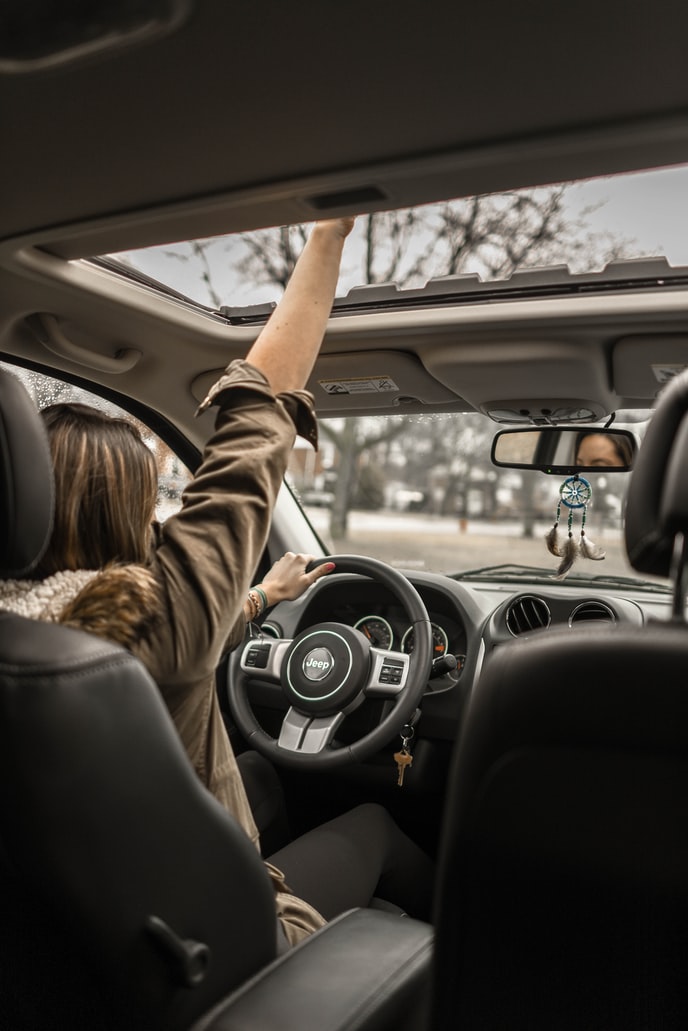You are here
Home 🌿 Marijuana Politics 🌿 ‘Arbitrary’ cutoffs of THC levels make it difficult to measure impaired driving 🌿‘Arbitrary’ cutoffs of THC levels make it difficult to measure impaired driving

After marijuana was legalized in Canada, more drivers in car crashes tested positive for the drug, new research finds.
As more states legalize marijuana for recreational use, it’s become more common for people to have the drug in their system, leaving public health officials grappling with a thorny question: What constitutes impaired driving?
For alcohol, the cutoff is uniform: A blood alcohol concentration above 0.08 percent. But there is no standard cutoff for THC, the psychoactive compound in marijuana. And even in places that do institute a cutoff, it’s unclear whether exceeding the limit constitutes impairment, experts say.
Blood THC levels typically peak quickly after smoking cannabis, reaching upward of 100 nanograms per milliliter of blood within 15 minutes of smoking it. Then, THC levels drop rapidly to less than 2 nanograms per milliliter of blood after about four hour. It takes around eight hours to reach similarly low concentrations of THC after taking an edible.
A 2019 study led by Dr. Jeff Brubacher, an associate professor in the department of emergency medicine at the University of British Columbia, found that THC concentrations below 5 nanograms per milliliter did not appear to increase the risk of car accidents. Levels above 5 nanograms per milliliter, however, were associated with an increased risk. In Canada, where recreational marijuana was legalized in October 2018, the cutoff for THC is 2 nanograms per milliliter.
After marijuana was legalized in the country, the number of drivers moderately injured in car accidents who were above the legal limit for THC more than doubled, from less than 4 percent of drivers to 8.6 percent. The percentage of injured drivers above the legal limit for alcohol didn’t change.
Studies in U.S. states, including Washington, where marijuana was legalized in late 2012, have documented similar trends.
But Brubacher said the presence of THC, even at levels that exceed 2 nanograms per milliliter, does not necessarily mean the drivers were impaired and doesn’t mean marijuana use was the cause of the crash.
“The drivers we are most concerned about are those with higher concentrations,” he said. His new study found that the number of moderately injured drivers with concentrations of THC above 5 nanograms per milliliter rose from 1.1 percent before cannabis was legalized to 3 percent after legalization.
“Which isn’t insignificant,” Brubacher said.
“But it’s still far less than what we’re seeing for drivers with alcohol above the legal limit. The collision risk for alcohol above 0.08 is sky-high, at around a 500 percent increased risk. With THC, it’s a much smaller risk. It’s not nothing, there is risk, but it’s smaller than with alcohol.”
Timothy Brown, director of drugged driving research and the University of Iowa’s National Advanced Driving Simulator, said that there’s a need for “better research that provides guidance for individuals about when it’s safe to drive.”
While there is relative uniformity in impairment associated with blood alcohol concentrations, THC concentrations are much more challenging to tie to specific cognitive and motor skill performance issues.
“When we use an arbitrary measure of THC in the blood, it doesn’t have the same meaning as a blood alcohol concentration,” Brown said.
One issue is that alcohol is water soluble whereas THC is fat soluble, so using the same type of test for both substances is the best tool law enforcement has at the moment, but may not be reliable, Pearlson said.
The fact that THC may linger at low amounts in the body for longer also presents a challenge for testing daily users.
“How do we differentiate it between someone who is acutely impaired versus someone who just has the drug in their system, between someone who used two hours ago versus someone who used last night and still has residual THC?” Brown said.
“Should we be treating them the same? From a traffic safety standpoint, it doesn’t make sense to punish someone if they aren’t making driving unsafe for others.”
Equipping people with the information they need to evaluate whether or not they are driving impaired after using marijuana is key in the absence of a one-size-fits-all test.
“To separate cannabis use from driving, don’t drive if you’re feeling any effects of cannabis,” Brubacher said.
And, he added, while “it’s concerning that the numbers went up, but it shouldn’t take our focus off the biggest issue with impaired driving, which is alcohol.”
420 Intel is Your Source for Marijuana News
420 Intel Canada is your leading news source for the Canadian cannabis industry. Get the latest updates on Canadian cannabis stocks and developments on how Canada continues to be a major player in the worldwide recreational and medical cannabis industry.
420 Intel Canada is the Canadian Industry news outlet that will keep you updated on how these Canadian developments in recreational and medical marijuana will impact the country and the world. Our commitment is to bring you the most important cannabis news stories from across Canada every day of the week.
Marijuana industry news is a constant endeavor with new developments each day. For marijuana news across the True North, 420 Intel Canada promises to bring you quality, Canadian, cannabis industry news.
You can get 420 Intel news delivered directly to your inbox by signing up for our daily marijuana news, ensuring you’re always kept up to date on the ever-changing cannabis industry. To stay even better informed about marijuana legalization news follow us on Twitter, Facebook and LinkedIn.




